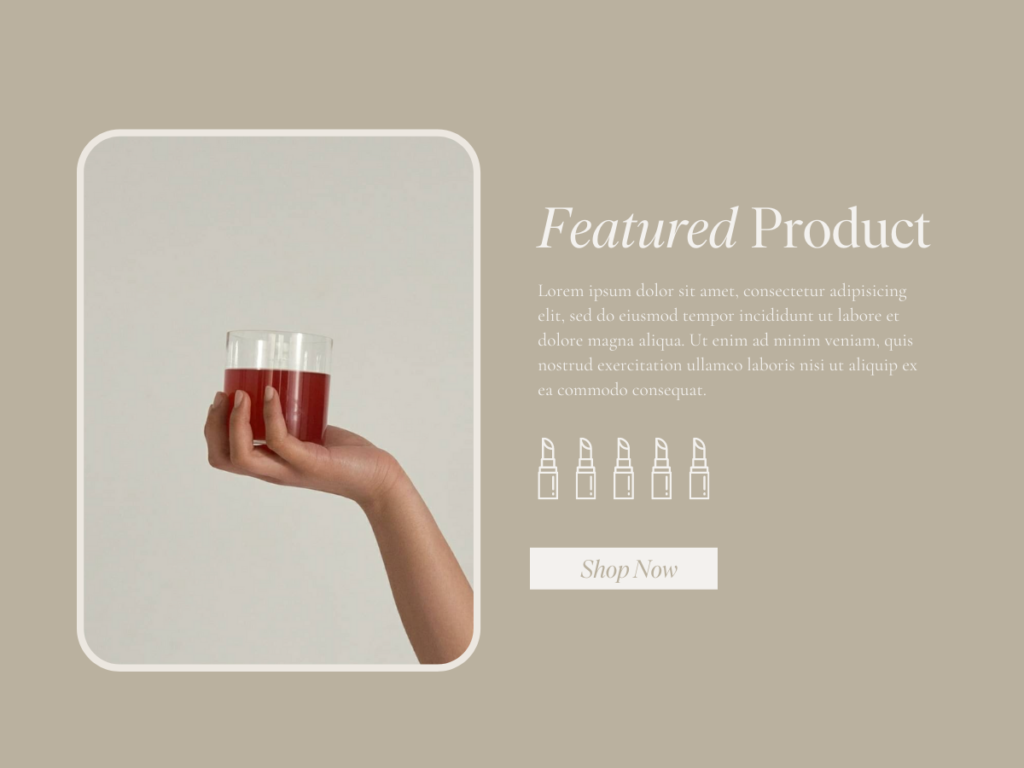How To: Get Glowing Skin | Reduce Appearance of Wrinkles for Radiant, Youthful Skin
Bright skin that radiates a noticeable glow has been in popular demand for centuries, and not without fair reason. Bright skin is often associated with youth and health. However, in order to identify how to achieve the appearance of bright, glowing skin, we must firstly understand the underlying principles of physics and cellular biology before we can recognise how to maintain these processes and preserve our skin.
The skin of young children and adolescents appears to emit a soft glow in part because the process of skin renewal, which occurs every 28 days on average, is relatively faster. During these years, collagen is also synthesised at the highest rate of our lives, promoting elasticity and smoothness. Due to the smooth texture of the skin, light rays are able to travel and reflect in the same direction (known as specular reflection) which gives the skin a bright, glowing complexion.
As we age, our bodies naturally produce less collagen at a rate of approximately 1% less collagen each year after the age of 20. Our skin tissue gradually becomes less equipped to regenerate damaged tissue as a result of DNA damage in stem cells, which can affect their ability to directly regulate tissue ageing.
Alas, all is not lost! While we cannot prevent ageing indefinitely, there are certain factors that are, to an extent, within our control that we can focus on and learn to take utmost care of in order to support our cellular processes for smoother, radiant skin.
WHAT TO AVOID
SMOKING AND ALCOHOL
The negative effects of tobacco and excessive alcohol consumption are widely known, and the ramifications on facial ageing are not unscathed. Smoking damage repair mechanisms in the body generate free radicals: unstable atoms that therefore react easily with other atoms, cause oxidative stress and contribute to damage and disease. Free radicals can target extracellular matrix molecules including collagen and elastin, thereby reducing their turnover which can be manifested through wrinkles, fine lines and loose skin.
A large, multiracial, cross-sectional survey published in the Journal of Clinical and Aesthetic Dermatology showed that smoking was associated with an increased severity of “crow’s feet”, glabellar and perioral lines, and tear-trough hollowing. Heavy alcohol consumption (classified as more than 8 standard drinks per week) was correlated with increased upper facial lines, oral commissures and mid face volume loss.
ULTRAVIOLET RADIATION
Ultraviolet radiation (UVR) can lead to skin cancer or melanoma, the most common type of cancer in the United States and worldwide. Having five or more sunburns can double your risk for melanoma. UVR is the leading cause of skin ageing, with about 90 per cent of skin damage caused by the sun. UVR penetrates the skin and is absorbed by the DNA in our cells, which leads to the formation of photoproducts that create oxidative damage in both our DNA and our mitochondrial DNA. If the frequency of damaging events exceeds the repair capacity, damaged DNA may not be repaired in time, which can then pass on to daughter cells.
WHAT TO DO
USE AN SPF 30+ SUNSCREEN
It goes without saying that the best protection against UVR is avoiding excessive sun exposure, though also wearing sunscreen whilst you are outdoors is the next best option, regardless of the weather. Dermatologists recommend the following when choosing a sunscreen:
- An SPF of at least 30+ (which blocks 97 percent of the sun’s UV radiation)
- A label that includes “broad spectrum” which protects against both UVA and UVB radiation
- To consider your skin type – if you have oily or acne-prone skin, select a sunscreen that is labelled as “non-comedogenic” which means it is less likely to block your pores and lead to break-outs. For dry skin, search for hydrating ingredients such as hyaluronic acid.
- For sensitive skin, opt for a physical sunscreen that includes zinc oxide and titanium dioxide. These compounds are non-irritating to the eyes and act as blockers that settle on the skin, thereby creating a barrier of protection. Conversely, chemical sunscreens tend to absorb UVR to prevent their penetration into the skin, but tend to be easier to rub into the skin and may leave less of a white residue on the skin compared to some physical sunscreens.
RECOMMENDED PRODUCT
EltaMD UV Physical Broad-Spectrum SPF 41 Lightly Tinted Chemical-free Facial Sunscreen
- Contains active ingredients 9% zinc oxide and 7% titanium dioxide (to block UVA and UVB radiation)
- Light, non-greasy, oil-free formula that blends into skin
- Ideal for fair and deep skin tones without leaving a white cast
- Water-resistant (40 minutes)
- Available both tinted and non-tinted
- Recommended use: apply to the face daily as the final step in your morning skincare routine (or underneath makeup) before heading outside.
GET BETTER QUALITY SLEEP
Sleep deprivation is correlated with increased signs of skin ageing, including fine lines, discolouration and reduced elasticity. Sleep is essential for quality brain function, critical cellular regeneration and development. A sufficient night’s sleep can increase learning, productivity and concentration during the next day.
After ultraviolet radiation, sleep quality is the second most relevant factor associated with skin tissue ageing and recovery for a variety of plausible reasons:
- Collagen is produced during sleep
- Quality sleep supports healthy immune function, including the release of proteins called cytokines during sleep that are crucial for a range of anti-inflammatory and cell-to-cell communicative functions that can induce cellular repair.
- Poor quality sleep lowers skin immunity and has been associated with an increase in pro-inflammatory serum cytokines that can inhibit collagen synthesis and increase collagen degradation.
- Sleep deprivation lowers skin immunity which reduces its ability to support cellular repair function and retain moisture
- Poor sleep can deregulate normal hormonal function, increasing cortisol and hence stress levels that may affect energy levels
To increase sleep quality, it is recommended to cease use of all electronics at least 30 minutes prior to bedtime, transform your bedroom area into a dimly-lit, quiet and peaceful environment, and to try to go to bed and wake up at approximately the same time each day.
USE MAKEUP THAT SMOOTHES THE APPEARANCE OF FINE LINES
The main focus for reducing the appearance of fine lines will always rest first and foremost with how well you take care of your skin, including your skincare regimen and other lifestyle factors.
However, heavier makeup such as thick, full-coverage foundations and powders that give a heavy appearance may sink into any fine lines or uneven texture in the skin. If you have dry skin, the effect may be amplified.
Mineral makeup is a great lightweight option that does not tend to emphasise the pores or appear as heavy as some liquid-based foundations. Mineral products also generally do not contain the emollient oils and waxes, fragrance, fillers and preservatives found in conventional makeup that can lead to clogged pores.
RECOMMENDED PRODUCTS
NATURAL MINERAL COVER (RADIANT LOOSE POWDER FOUNDATION)
NUDE BY NATURE
- This mineral powder contains 100% natural, plant-based ingredients, including Australian Kakadu Plum (known for its abundant vitamin C content)
- The formula is buildable, non-comedogenic, non-drying and contains oil and shine.
- Contains SPF 15
For a more long-wearing option, you may like to try:
DOUBLE WEAR LIGHT (SOFT MATTE HYDRA MAKEUP)
ESTÉE LAUDER
- Lightweight version of the infamous, full-coverage Double Wear Makeup
- Light-to-medium coverage and oil-free with a natural finish
- Available in Cool, Neutral and Warm undertones
- Infused with concentrated hyaluronic acid for non-drying properties
SKINCARE
USE A MULTI-MOLECULAR WEIGHTED HYALURONIC ACID SERUM
One distinct feature of youthful skin is its elasticity and ability to retain a high water content. Hyaluronic acid (HA) is the predominant molecule found in the extracellular matrix of the skin. HA is associated with maintaining skin moisture balance due to its unique ability to bind and retain water molecules. As we age, the epidermis of our skin loses HA whilst HA is still present in the dermis. Therefore, our epidermis gradually reduces its capacity to retain as much moisture in the skin.
Ingested HA has been shown to increase synthesis of HA and promote cell proliferation in fibroblasts, which are a type of biological cell in connective tissue involved in collagen and elastin synthesis. A study in the Journal of Clinical Aesthetic Dermatology found that application of a topical hyaluronic acid as a serum, lotion and cream in 33 women resulted in a significantly finer skin structure and improved skin elasticity after 2 to 8 weeks of treatment. .
What to look for in a hyaluronic acid product
Many over-the-counter HA products with a concentration of 0.2%-0.5% tend to have a low molecular weight that can cause reactions. Professional, quality HA products tend to contain multiple forms of HA at multiple weights, and have increased potency with a concentration anywhere from 0.5% to 2%.

RECOMMENDED PRODUCT
FLOODGATE HYALURONIC ACID SERUM
GHOST DEMOCRACY
- Contains 2.1% hyaluronic acid (in low, medium and high molecular weights)
- Also contains 4.0% niacin amide, 1.6% linden flower extract & 1.3% white tea leaf extract
- Quick-absorbing, lightweight and non-irritating
- For all skin types
- Contains no sulfates, silicones, drying alcohols, added fragrance, phthalates, parabens or synthetic dyes
EXFOLIATE REGULARLY
As we age, our skin’s natural exfoliating mechanisms decelerate, resulting in reduced cell turnover that can sometimes lead to a build-up of dead skin cells among excess oils and debris. As aforementioned, youthful skin appears smooth in part due to relatively faster skin renewal rates. Exfoliating regularly can help to reduce the appearance of fine lines by increasing cellular turnover.
INCORPORATE ANTIOXIDANT-RICH WHOLE FOODS INTO YOUR DIET
Several studies have found an association between the intake of vegetables, foods high in carotenoids and Vitamin C with decreased photoaging; meanwhile, consumption of saturated fats and sugar were found to be linked to an increase in the appearance of wrinkles.
Mounting clinical research has found that while the primary treatment of skin ageing is photo protection (for example, by regular application of SPF), dietary changes via the use of antioxidants and polyphenols may help to reduce oxidative stress, the formation of free radicals in the body that cause cellular damage and hence reduce skin damage.
The epidermis comprises a range of protective enzymatic, water-soluble and lipid-soluble antioxidants. However, whilst ageing diminishes the effect of endogenous antioxidants synthesised by the body, supplementing a diet rich in antioxidants can aid in protecting oxidative skin damage. Additionally, essential vitamins such as vitamin C and E cannot be produced by the body naturally and must be acquired via dietary intake regardless.
One way to increase your consumption of antioxidant-rich whole foods is to create smoothies or juices containing an abundance of fruit and vegetables.
The NutriBullet Balance is an ideal blender for creating smoothies. The Balance is able to weigh foods and calculate calories, protein, fibre and sugar in each drink via the bluetooth-compatible Balance app.

Leave A Comment